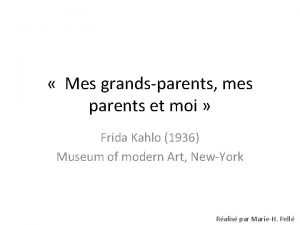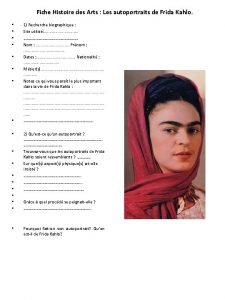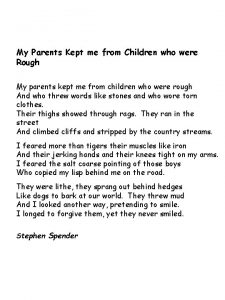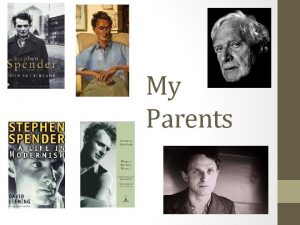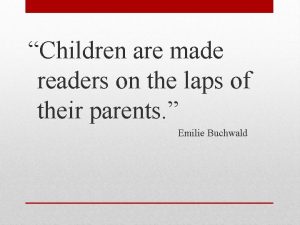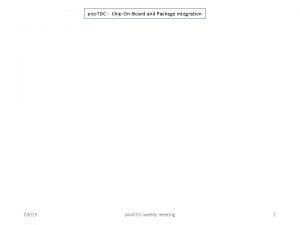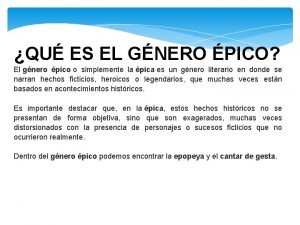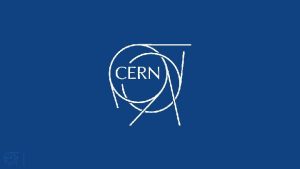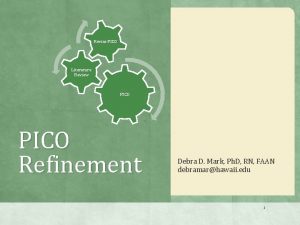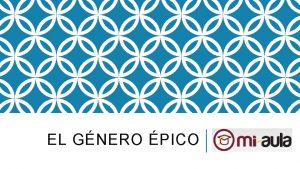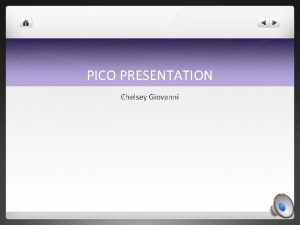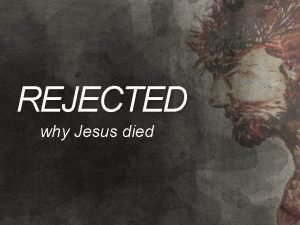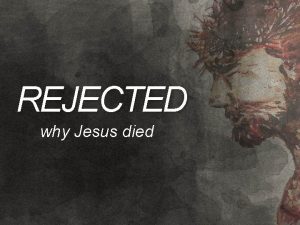PICO P Parents whose children had died in














- Slides: 14



PICO • P - Parents whose children had died in PICU after withdrawal of life supports • I – open ended, self administered questionarres • O - To identify and describe the priorities and recommendations for end of -life care and communication from the parents’ perspective

Validity criteria

Was the choice of participants explicit and comprehensive? • Single hospital in Boston • Parents whose children had died after the foregoing of life-sustaining treatment were eligible to participate. • Age - newborn to 18 years • Full range of medical and surgical diagnoses • 12 and 45 months had elapsed after the children’s deaths • Yes

Was data collection sufficiently comprehensive and detailed? • To elicit parent-derived rather than expert-hypothesized priorities • 4 open-ended questions • Two questionnaires were mailed to each address to provide 1 for each of 2 parents in 2 -parent households • Complete the questionnaire independently

• Yes

Were the data analysed appropriately and the findings corroborated adequately? • Yes • Data were read and coded independently by the first 2 authors • Parental priorities were established if they appeared in 20% of the parental responses. • Ethics committee clearance, consented

Results • 96 eligible households • 56 completed questionnaires (58%) from 56 different parents • 36 mothers (64%) and 20 fathers (36%) • mean age of parent respondents was 42. 3 years (± 8. 4) • 75% were married • Ninety-one percent (91%) were white • Regarding religious identification, 50% were Catholic, 34% Protestant, 5% Jewish, 2% Muslim, and 9% indicated no religious affiliation


Applicability to patient care • Yes • Different social, cultural and educational back grounds

Does the study offer helpful theoretical conclusions? • Yes

Does the study help me understand the context of my practice • Yes

Does this study help me understand my relationships with patients and their families? • Yes
 An is a child whose parents are dead
An is a child whose parents are dead Frida kahlo parents
Frida kahlo parents Parents parents
Parents parents Fiche artiste frida kahlo
Fiche artiste frida kahlo Timothy winter education
Timothy winter education My parents kept me from children who were rough
My parents kept me from children who were rough Heidi with blue hair analysis
Heidi with blue hair analysis Children are made readers on the laps of their parents
Children are made readers on the laps of their parents Children obey your parents in the lord
Children obey your parents in the lord Readers are made on the laps of their parents
Readers are made on the laps of their parents I had had breakfast before i went to school
I had had breakfast before i went to school I have eaten breakfast
I have eaten breakfast At the cross you died for me
At the cross you died for me Rajdeep kaur died
Rajdeep kaur died Shakespeare date of birth
Shakespeare date of birth

